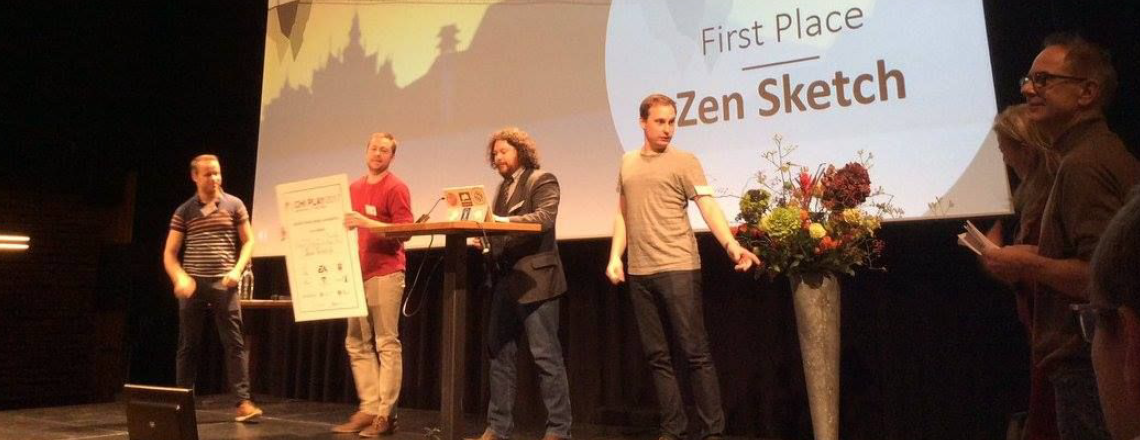
Blake Williford, a doctoral student in the Department of Computer Science and Engineering and member of the Sketch Recognition Lab (SRL) at Texas A&M University, earned first place at the CHI PLAY 2017 student game design competition for the game, "ZenSketch", which he created with fellow SRL graduate students Matthew Runyon and Adil Hamid Malla.
The competition, held Oct. 15-18 in Amsterdam, Netherlands, was part of an international interdisciplinary conference for researchers and professionals across all areas of play, games and human-computer interaction. CHI PLAY is sponsored by the Association for Computing Machinery (ACM) Special Interest Group for Computer-Human Interaction (SIGCHI).
With over 30 games submitted from around the world, "ZenSketch” won the Jury award and was selected best game at the event. Williford, Runyon and Malla developed the game with the intention of helping people develop confidence in their drawing abilities.
“The intuition behind ‘ZenSketch’ was that even the most atomic element of any drawing – a single line – can be a fun exercise, and can build confidence in people who want to learn how to draw,” Williford said.
Williford works in the Sketch Recognition Lab under Dr. Tracy Hammond, director and computer science professor. The lab’s mission is to identify and understand a person’s behavior and actions and infer and predict a person’s intentions and future choices using activity recognition algorithms.
"ZenSketch" was created after years of collaborative research on the National Science Foundation funded project, "SketchTivity", which is a joint project with the Georgia Institute of Technology. Hammond; Dr. Julie Linsey, associate professor; and Wayne Li, James L. Oliver professor from Georgia Tech; are the principal investigators of this project.
This research explores the opportunity to improve upon how sketching is traditionally taught by providing real-time feedback to students via sketch recognition.
“This work represents a transformative moment in creativity, drawing and gamification,” Hammond said.
Williford hopes the research will eventually enable people to draw in a new way.
“The goal of this research is to one day empower millions of people to learn how to draw in a novel way that’s more engaging and motivating than traditional methods,” Williford said.
CHI PLAY is sponsored by the ACM Special Interest Group for Computer-Human Interaction (SIGCHI).